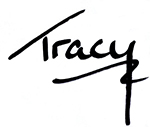
You’re Not a Machine: Why Downtime is Essential
As an indie author, you’re not just a writer. You’re a marketing department, an editor, a publisher, a social media manager, and possibly the person who has to remember to water the plants. All this juggling means burnout is more than a risk—it’s almost a guarantee if you’re not actively carving out downtime. And yet, downtime isn’t laziness or time wasted. It’s the fuel that keeps the creative engine running and prevents that ugly beast called burnout from knocking on your door.
You’re reading this because you probably feel it—those days when writing feels like wringing a dry sponge. And it’s no surprise. Creativity and productivity both thrive on periods of rest and recovery. Without downtime, you’ll hit a wall faster than a plot twist in a thriller novel.
Downtime is on my mind at the moment. I’m working well ahead of schedule so that I can spend a few days in the Canadian Rocky Mountains, relaxing and not worrying (too much) about books, publishing, and marketing. By the time you read this post, I will be just about home again and, I hope, de-stressed and ready to write.
Daily Downtime: Give Your Brain a Breather
If you’re constantly on the grind, your creative well is going to run dry. But taking small, deliberate breaks every day can help. Think of it as your brain’s time to reboot. Like any other muscle, it can’t work well if you keep it under tension all the time. Here’s how you can make downtime part of your daily routine:
- Micro-breaks: Try scheduling five-minute breathers throughout your day. Don’t just stare at your phone, though. Stand up, stretch, walk to the window and stare at the birds—anything that’s not work or screens.
- Low-energy physical activity: Taking a short walk or doing some gentle yoga isn’t just good for your body, it’s proven to help clear your head. Running can also be meditative once you reach a rhythm (just don’t worry if you’re not there yet; walking still counts!).
- Creative distraction: Creative burnout often calls for something that uses a different part of your brain. Try sketching (badly), noodling on a guitar, or even doodling. These low-pressure activities let your brain relax while still working through ideas in the background.
- Restorative breaks: This might sound a bit too woo-woo, but don’t underestimate the power of sitting with a hot beverage, feeling the breeze, or even hanging out with your pets. That cat isn’t just a pet—it’s therapy on four legs.
Remember: The aim of daily downtime isn’t to kill time, but to give your mind space to recover and reset. You’re creating a fertile ground for new ideas to sprout.
Longer Downtime: Weekends, Holidays, and Vacations
Yes, weekends are a thing—even for writers. We’re not just talking about a Sunday binge-watching session that leaves you more tired than when you started. Plan longer periods of meaningful downtime to properly recharge. And by “meaningful,” I mean doing things that aren’t tied to the pressure of achieving something.
- Weekends or days off: It’s easy to work through weekends, but that just sets you up for long-term fatigue. Schedule at least one day off weekly where you don’t open your project file, even if the urge is strong. This is time for connecting with family, friends, hobbies, or even an afternoon nap in the sunshine (yes, napping is productive).
- Mini-breaks or short vacations: Traveling doesn’t have to mean hopping on a plane. A weekend at a nearby nature reserve or a local bed and breakfast can be a refreshing break. Even a staycation where you pretend you’re a tourist in your own town can reset your brain.
- Extended vacations: And then there’s the real deal—a week or two in the mountains (!) or at the beach. A vacation is more than just time away; it’s an opportunity to return to your writing life with a fresh perspective. It’s hard to notice the weeds in your manuscript when you’re staring at the same garden every day.
Constructive Downtime: Active Rest That Doesn’t Feel Like Work
Not all downtime means zoning out on the couch (although that’s perfectly valid sometimes). Constructive downtime involves activities that are mentally or physically engaging, but not draining. These activities stimulate a different part of your brain, letting your creative mind marinate in the background.
- Low-intensity physical activities: Walking, hiking, light running, gardening—these are all excellent for creativity. If you can, do them outside. Sunlight boosts mood, which indirectly boosts creativity. Plus, there’s something about moving your body that helps with processing and problem-solving. Ever had an “aha!” moment in the shower? Walking works the same way, minus the shampoo.
- Play with your pets: There’s something grounding about spending time with animals. They don’t worry about deadlines or reviews—they just exist. It’s a reminder to be present. Even ten minutes tossing a ball for a dog or teasing a cat with a string can do wonders.
- Hobbies you don’t monetize: Yes, it’s tempting to start a new hobby with a monetization plan in mind, but resist the urge! Whether it’s painting, cooking, knitting, or playing an instrument, having something you love purely for fun is a form of creative therapy.
Burnout Prevention: Your Brain on Downtime
In a profession where every social media scroll is a reminder of someone else’s success, it’s easy to feel like you’re not doing enough. But writing, like any art, needs rest. And I don’t just mean sleep (though that’s crucial, too). If you’re constantly “on,” you’re on a fast track to burnout. Burnout not only stalls your writing, but can also negatively impact your mental health and relationships.
The trick is to embrace downtime as a necessary part of your process, not an indulgence. Creative recovery doesn’t happen in front of your manuscript—it happens away from it.
Final Thoughts
Being an indie author means you have the freedom to control your time. But it’s a double-edged sword—there’s always the temptation to fill every minute with work. Yet without downtime, you won’t just run out of steam—you’ll run out of stories to tell.
So, whether it’s a walk around the block, a weekend unplugged, or a real vacation in the Rockies, take time to step away from your work. It’s not just about avoiding burnout—it’s about replenishing your creative well and living a life worth writing about.

Write More, Faster Than Ever Before | Are You Prolific?
Editing Your Next Novel? Mark Posey offers fast, writer-friendly edits with zero drama. Check out services »
